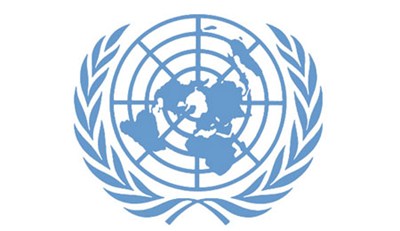The United Nations Development Program (UNDP) created a web site for the United Nations Volunteers (UNV) initiative called the UNDP-UNV Talent Programme for Young Professionals with Disabilities. It’s a program to recruit people with disabilities to serve as UN Volunteers. Its web site opens with this:
UNDP and UNV commit to leaving no one behind. As part of this commitment, the Talent Programme promotes the inclusion of persons with disabilities into our workplace. The Talent Programme also aims to build a talent pipeline of highly qualified professionals with disabilities who can contribute to the development sector, and to attaining the Sustainable Development Goals (SDGs) at national and global levels.
In addition to the grammar problem in the first sentence, the UNDP web site for this initiative leaves lots of people behind: the web site is not accessible for people with disabilities.
The web site does not meet even basic accessibility standards as outlined by numerous organizations, including the Web Content Accessibility Guidelines (WCAG). The UN General Assembly has designated the Department of Global Communications as the focal point for web accessibility in the United Nations, and this UN web site talks about the UN’s commitment to online accessibility – which, unfortunately, UNV and UNDP haven’t followed for their initiative specifically focused on people with disabilities. How can an initiative that says it promotes the inclusion of persons with disabilities in the workplace exclude those same persons online? As someone who has worked for the UN, I know the answer to this question, but shall save that for another time…
Highly qualified professionals with disabilities absolutely can contribute to the development sector and to attaining the Sustainable Development Goals (SDGs) at national and international levels. In fact, they do already – if you don’t know that, you truly are not paying attention.
I have worked with highly-skilled people with a variety of disabilities – as employees, consultants and volunteers, online and face-to-face serving as web masters, editors, researchers, designers and more. It’s not unusual for me to find out someone I’ve been working with for weeks or months is, in fact, legally blind, or deaf, or is a person with limited mobility. We meet regarding what they CAN do, not what they cannot, and I’ve benefitted greatly, personally and professionally, from their expertise and talent.
I emailed representatives of UNV and UNDP in early December, saying pretty much the same thing I’ve just blogged, and I tweeted to UNDP and UNV as well. In my post, I also recommend to UNV and UNDP the nonprofit organization Knowbility to help their web designers and developers to fix this dire accessibility issue on the web site.
I got a reply via email on December 11th from “Erik on behalf of the UNDP-UNV Talent Programme for Young Professionals with Disabilities”:
Thank you very much for your feedback. We are aware of the limitations of the websites and currently have teams working on projects that are focused on making them user-friendly and compliant with accessibility standards. Since we launched this initiative, we have been able to reach a wide range of persons with disabilities as evidenced by increased numbers of candidates registered and of applications. We also provide the option to reach out to us in person in case specific assistance or concerns are needed in the application process. As we are a continuously learning organization, our goal is to strive for a fully inclusive working environment and take every opportunity to improve. We appreciate your patience and understanding. Please let us know if we can further assist you in navigating the site.
So, in other words, they mean to say: the site is working just fine, people are applying for this program, people who can’t navigate our website can just email us and we’ll help them with the process, and being a “continuously learning organization”, we can’t be faulted for not having an accessible web site for people with disabilities for a program designed especially for people with disabilities at the get-go. Don’t bother us.
I really hope that UNV and UNDP will realize how bad this makes the agency and this program look, and choose to RAPIDLY remedy this situation regarding the accessibility of their web site for a program meant to increase inclusion of professionals with disabilities. They made a mistake – no excuses. Let’s hope UNV and UNDP not only fix this web site, but make a future commitment to digital inclusion in all of their web sites – especially those that are supposed to cater specifically to people with disabilities.
If you would like to let UNV and UNDP know what you think of the site and their response, I urge you to email these four addresses:
- Talent Programme <talent.programme@unv.org>
- Anant Sharma <anant.sharma@undp.org>
- Anjali Kwatra <anjali.kwatra@undp.org>
- UNV Media <unv.media@unv.org>
Also see:






